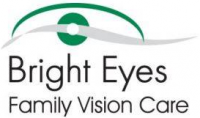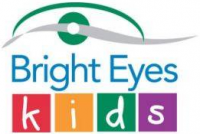Often parents will bring their children in for a comprehensive eye exam because they are concerned about the reading development of their child. They rightfully want to know if a visual problem is interfering with development of proper reading.
When evaluating an adult or child who has concerns about reading ability, there are several visual skills that I evaluate. These including clarity of sight, eye teaming, eye focusing, and eye movements. I have several ways to evaluate eye movements. Some of these tests rely on observation of eye movements; some tests involve timing the accuracy of read material.
I now have an additional method that I am very excited about. The Visagraph III™ is a computer-based system for measuring eye movements while reading. Through the use of infrared sensors, an individual's eye movements are recorded while he or she silently reads an appropriate text selection while wearing special goggles. Following the reading, a brief series of questions determines whether or not the subject reads with reasonable comprehension. It can be used to confirm that a patient is a slower reader due to visual problems.
In addition to analysis of specific types of eye movements, I look at the overall path the the eyes take when the patient reads.
For example, a good reader will have a nice, even "stair-step" pattern from left to right with a smooth return to the left that is symmetrical for the right and left eye. The image below is from a real patient who reads well above grade-level:
But a person who has poor eye movement skills when reading will show lots of uneven movements both left and right as they go back to re-read certain words. They will also have irregular movements when the eye movements are not symmetrical. This could occur due to eyestrain, focus problems, or problems using the eyes as a team. The image below is from a patient that reads well below grade-level.
This test is important to perform both during the initial evaluation and again at the end of therapy, if any has been provided. That way, I have a comparison to determine the level of progress that has been achieved and how much this mirrors the improvement that patients and parents report in reading skill.
If you or your child appears to have reading skill that is well below what you think it should be, a complete visual evaluation is in order. There may not be a vision issue impacting reading performance, but if there is, it should be corrected as early as possible.
Be Well!
Nathan Bonilla-Warford, OD
Bright Eyes Family Vision Care
Located in the Westchase and New Tampa neighborhoods.



This is one piece of equipment that really allows me to understand how important appropriate eye movements are to reading. Seeing just how inaccurate our eyes are moving and how hard we have to work to read, really forms a clear picture of what the problem is and what needs to be fixed. Your patients are very lucky that you have invested into this technology.
My son is 9 and has been tested with the Visagraph….. He had some irregularities in eye movement. He often skips words when reading or skips lines. What should we do from this point? What exercises are available and how do we find someone to help?
Thank you
I am a second grade teacher and I am writing a research paper for my Education specialist degree. My research is about eye tracking and how it effects reading. We have a Visagraph in our school system but I think it is not being used enough. I feel very strong about how eye movement effects reading abilities and would like to hear from an opthamologist about the connection in eye muscles and left to right sequencing while reading.
Lydia,
The next step is have your son evaluated by an eye doctors that specializes in eye movements. They can perform a full evaluation and determine if a visual diagnosis is contributing to your child’s reading difficulty. Only then can you decide on what treatment plan may be needed.
You can find a specialist at http://www.covd.org and http://www.optometrists.org.
Good luck.
-Dr. B